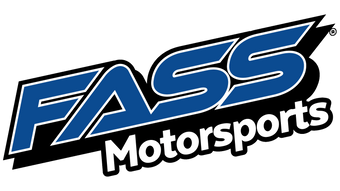For anyone who's ever looked at a stock truck, Jeep, or SUV and thought, "It needs more," a suspension lift kit is an extremely common upgrade. But these towering transformations didn't just appear overnight.
The evolution of suspension lift kits is a pretty fascinating journey—pushed forward by the demands of off-roading, the progression of technology, and a healthy dose of the American spirit.
The Early Days: Necessity is the Mother of Lift
In the nascent days of four-wheeling, purpose-built off-road vehicles were rare. Enthusiasts often adapted work vehicles or early Jeeps for rough terrain. Lifts, if they happened at all, were rudimentary and often born out of necessity.
Think custom-made shackles, leaf spring re-arching, or even stacking leaf springs – anything to gain a precious few inches of clearance to tackle more challenging obstacles.
These weren't "kits" in the modern sense, but rather ingenious, often backyard, engineering solutions. The focus wasn't on aesthetics or massive tire fitment, but simply on preventing bellies from scraping and differentials from snagging.
Time for a lift kit? Come see us!
FASS Motorsports
25 Town and Country Drive
Washington, MO 63090
The 1970s: The Birth of the "Lift Kit"
The 1970s saw a surge in popularity for recreational off-roading. With more people taking their trucks and SUVs onto trails, the demand for better performance and increased capability grew.
This era truly marks the birth of the dedicated "lift kit" as we understand it.
Companies began to offer manufactured solutions, typically involving longer shackles, taller leaf springs, or coil spring spacers. These early kits were still relatively modest by today's standards, often providing 2-4 inches of lift.
The primary goals remained functional:
- Improved ground clearance for larger tires
- A better approach/departure angle
- Aesthetics were a secondary, albeit growing, consideration
The 1980s & 90s: Customization Takes Hold and Technology Advances
The 80s and 90s witnessed an explosion in the aftermarket industry, and lift kits were right at the forefront. As pickup trucks and SUVs became more mainstream, so too did the demand for custom suspension.
Lift kits became not just about function, but about making a statement. This period saw the introduction of more sophisticated designs, including:
-
Drop Bracket Lifts: For independent front suspension (IFS) vehicles, drop brackets became a popular way to achieve significant lift while maintaining proper suspension geometry.
-
Body Lifts: While not a true suspension lift, body lifts gained popularity as a cost-effective way to increase height and clear larger tires by raising the body from the frame.
-
Performance Shocks: As lifts got taller, the need for better damping became apparent. Performance shocks designed for lifted applications became an integral part of the kit.
Furthermore, advancements in manufacturing processes allowed for more precise and durable components. The "bolt-on" nature of kits became more prevalent, making installations more accessible to the average enthusiast.
The 2000s and Beyond: Precision, Performance, and a Plethora of Options
The new millennium brought unprecedented levels of sophistication and specialization to the lift kit market. Key developments include:
- Coil-over Systems: Offering superior adjustability and performance, coil-over shocks became a staple in high-end lift kits, especially for serious off-road racing and crawling.
- Long Travel Kits: Designed for desert racing and high-speed off-roading, these kits maximize wheel travel for incredible articulation and stability.
- Computer-Aided Design (CAD): The use of CAD software allowed manufacturers to design kits with greater precision, ensuring optimal geometry and compatibility with factory components.
- Vehicle-Specific Engineering: Suspension lift kits became highly engineered for specific vehicle platforms, accounting for unique suspension designs and electronic systems.
- Electronic Compatibility: With modern vehicles integrating complex electronic stability control, ABS, and sensor systems, lift kit manufacturers now design their products to work seamlessly with these technologies, often including modules to recalibrate sensors.
Today, the market offers an astounding array of options, from mild leveling kits to extreme 10-inch-plus lifts, catering to every budget and off-roading ambition.
The history of suspension lift kits is a testament to human ingenuity, a desire to make vehicles stand out (literally), and the demand for better performance—both on and off the blacktop.
If you have questions about a lift kit, contact us! Our service team is available by phone at (636) 433-5410, or by email at info@fassmotorsports.com.

